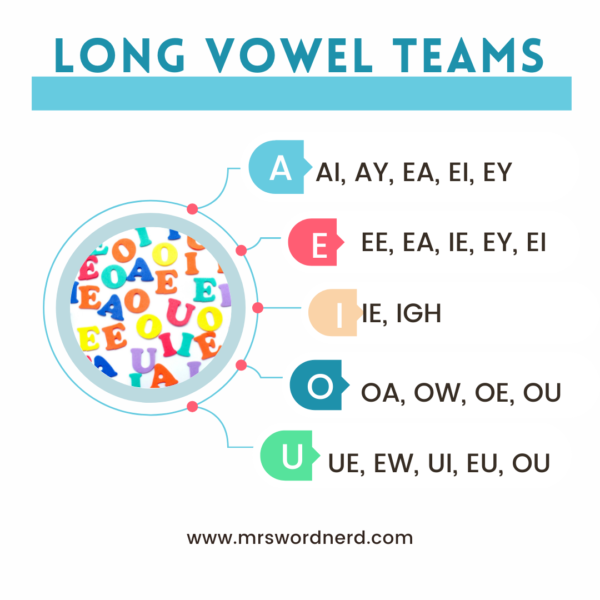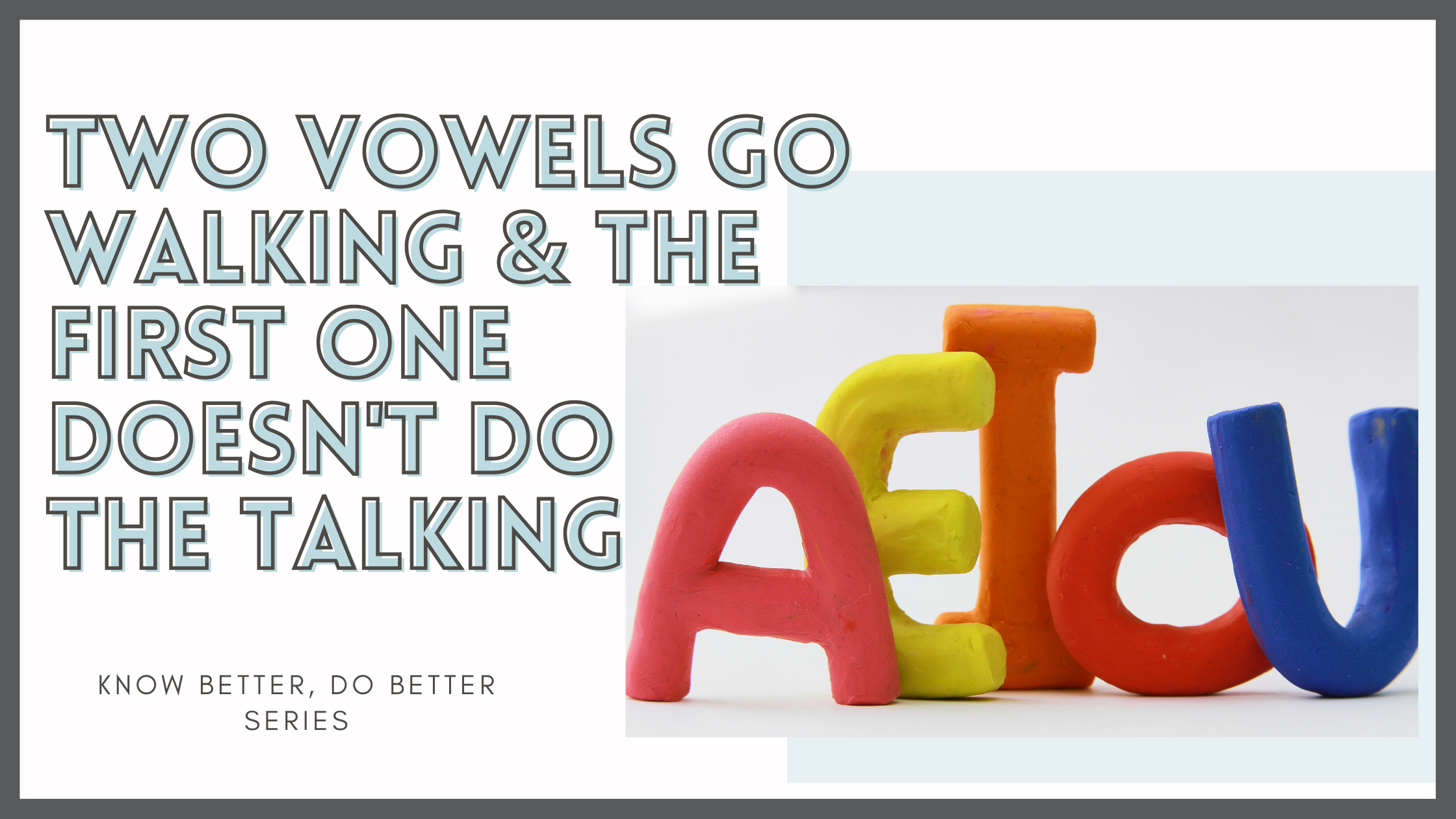We all know the saying “When two vowels going walking, the first one does the talking.” We might even have a picture of O and A walking together with smiles. The reality is this saying isn’t really true. It works about 45% of the time and for some vowel teams it works even less than that.
The real shocker is this research was done in 1963 by Thomas Clymer. It was titled “The Utility of Phonics Generalizations in the Primary Grades”. That’s over 50 years!! So for 50 plus years it has been known that this “rule” doesn’t work, yet it is still being taught all that time. Anyone else find this fascinating? But also frustrating?! You can check the study here.
So What Do We Do
I think the first thing as teachers we need to look at is how disconnected the curriculum and training we get is from what the educational research is saying. This is not true for all things, but the fact we have a saying continuing to be used for 50+ years even when the research says it isn’t reliable proves how much we need to be lifelong learners.
Know Better
I was shocked when I discovered all of this. So my reaction was to learn and know better.
- Know the vowel teams better.
- Know which ones represented one sound
- Know which ones represented two or more sounds and if there was any thing to help know when it was certain sounds.
Let’s pause for a second. Yes this “rule” does work 45% of the time so we don’t need to throw it completely away. We also need to know the limitations of it. So let’s know better and start breaking it down.
Our vowel teams are:
 The study looked specifically at the vowel teams AI, EA, OA and UI. It found that:
The study looked specifically at the vowel teams AI, EA, OA and UI. It found that:
- AI works 66% of the time
- EA works 66% of the time
- OA works 97% of the time
- UI coming in last place at 6% of the time.
EA is a hard one because it represents Long A in the words great, break and steak. It also can be a short e like read. That helps account for the 44% of the time it doesn’t work.
UI is tricky because most of the time it is actually making more of the Long /oo/ sound than the Long U sound. This is why it is so unreliable.
Other Vowel Teams to Watch Out For:
EI doesn’t really follow this rule as it represents Long A and Long E. The same is true for IE it can be for Long E or Long I.
OU maybe the trickiest of them all as it can represent 5 different vowel sounds including- Short U, Long O, the /ou/ sound, and the Long /oo/ sound. It is really hard to know when it will make what sound as all tend to use it in the middle of words.
OW also doesn’t work as it can be Long O or /ou/ sound. It is hard to know when it is what sound as both use OW at the end of words.
Then if we considered the vowel diphthongs OI/OY, AU/AW and OU/OW. It also makes using this “rule” tricky. None of these are saying the first vowel as they each make a new sound. However, in a review of generalization about certain spellings found in this article by Nell Duke. It was found that:
- AW makes the /aw/ sound in saw 100% of the time
- OI makes the /oi/ sound in join 100% of the time
- OY makes the /oy/ sound in boy 100% of the time
Do Better
As teachers, our job should be to help students crack the code. Part of cracking the code is knowing for ourselves how the vowel teams work and what makes them tricky or reliable. Does this mean we have to completely abandon this “rule” if you aren’t ready? No it doesn’t!
Just knowing the rule has limitations is a huge step. Being aware of the vowel teams and the sounds they represent is a HUGE step. This will help to guide your students to help them be aware which ones don’t fit the rule.
What Else We Can Do
I know shifting some of our teaching practices is scary and not fun. If we remember we are doing this is all for good reasons and to make it easier for our students to read and write our language it helps us understand why.
Even though the research might not support this “rule” it does support:
- teaching phonics
- teaching spellings of long vowels or rimes
- helping students develop their orthographic knowledge
Let’s focus on that
Vowel Team Freebie
To help you get started I am attaching the vowel team list here so you can remember what vowel teams represent what long vowel sounds to help you and your students stay aware when “Two vowel go walking the first vowel does the talking or maybe the second one vowel or neither.”







Leave A Comment